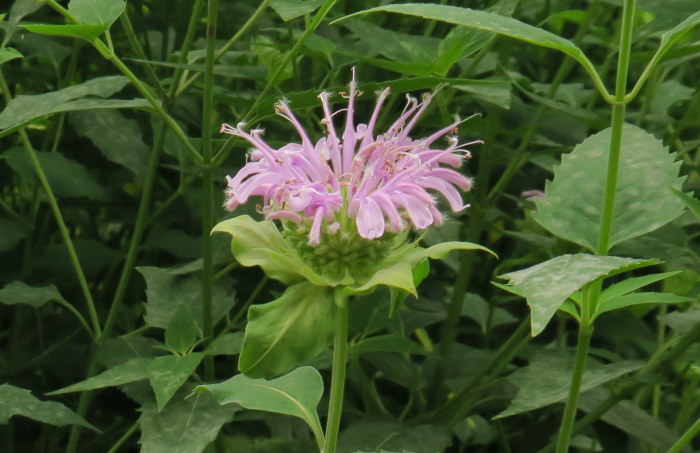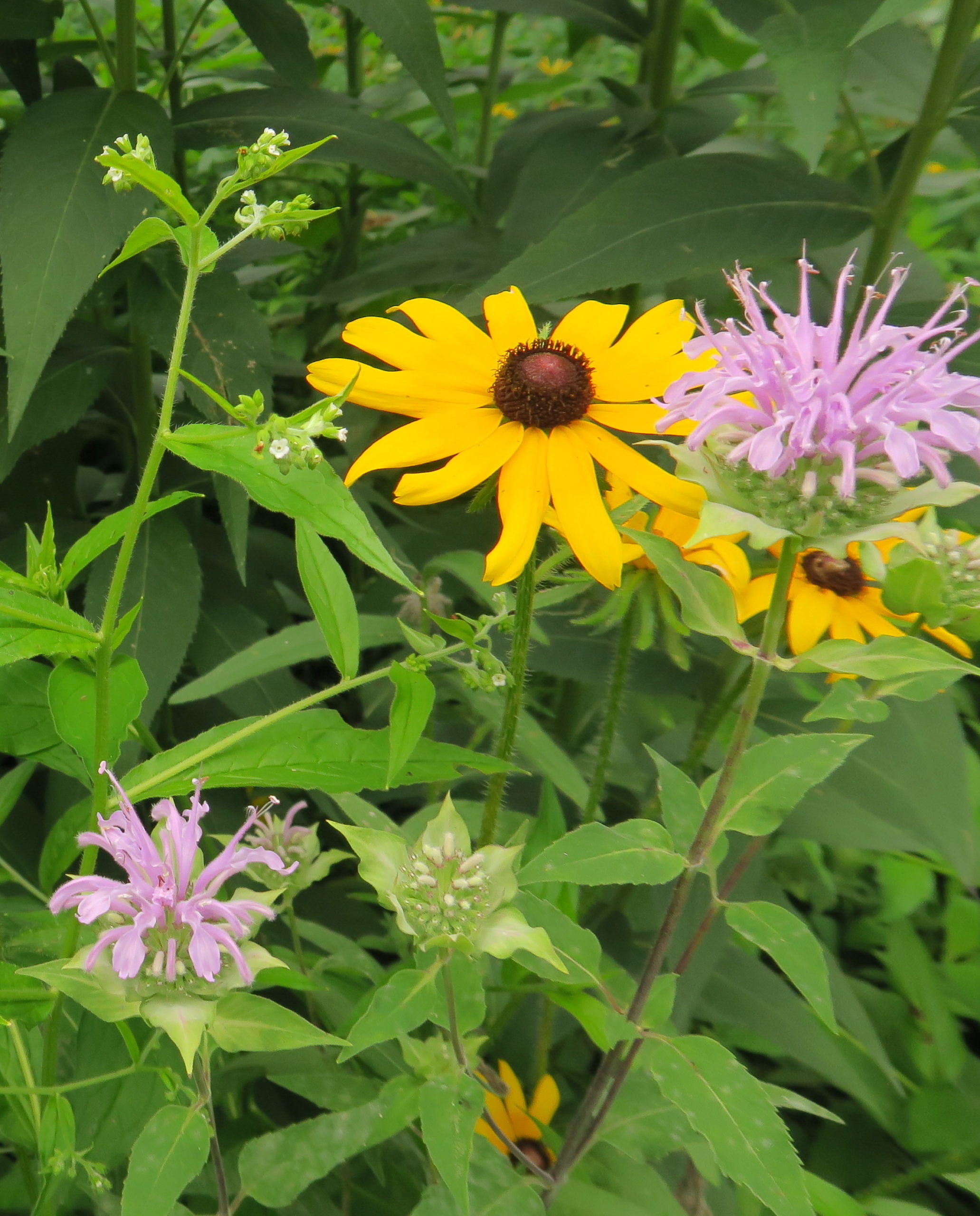Although autumn officially began this week, much of Iowa is experiencing summer-like weather, so I thought it fitting to feature a native plant that typically blooms from June through August. Wild bergamot (Monarda fistulosa) can thrive on disturbed ground near roadsides as well as in high-quality prairie habitats or woodland edges. Also known as horsemint or bee balm, it is native to almost all of the U.S. and Canada.
You can often find wild bergamot growing along bike trails, and it’s a popular plant for restored prairies and butterfly gardens. Minnesota Wildflowers says of this “excellent garden plant,” “The dried leaves and flower heads are wonderfully aromatic; Bergamot oils have been used in natural healing for centuries.” A closely related plant called Oswego tea “was used as a beverage by the Oswego tribe of American Indians and was one of the drinks adopted by American colonists during their boycott of British tea,” according to the Britannica website.
In addition to writing occasionally for Bleeding Heartland, Katie Byerly regularly puts original videos about wildflowers up on her “Iowa Prairie Girl” YouTube channel. She featured wild bergamot last year.
Illinois Wildflowers provides botanically accurate descriptions of the stems, leaves, and flowerheads. The first tubular flowers are starting to emerge on this plant, which I photographed in early July.
More flowerheads opening:
Some plants with most of the flowers in view:
The Illinois Department of Natural Resources cautions that wild bergamot “does spread easily and may crowd out other plants if not kept in check.” Here’s a large colony growing in a prairie planting along the Urbandale bike trail.
A wide range of pollinators including long-tongued bees, butterflies, moths, and hummingbirds collect nectar from wild bergamot flowers. I don’t know what kind of bee I captured here.
Some prairie coneflowers are visible in the background.
Growing alongside black-eyed Susans.
The small white flowers in the upper left are Virginia stickseed.
That’s rattlesnake master on the left.
With one of the spiderwort varieties:
These wild bergamot flowerheads are past their prime.
I went back to the Urbandale planting in early September to photograph some plants that had gone to seed. Illinois Wildflowers comments, “While this plant is easy to grow, it often becomes rather dilapidated in appearance as the growing season progresses,” and you can see that here.
















1 Comment
A great bergomot-biography photo series...
Bergamot tends to be avoided by grazing cattle, so it can sometimes be seen on heavily-grazed prairie pastures after other prairie flowers and grasses have apparently disappeared. Some Iowa pasture owners have had the happy experience of seeing many prairie flowers and grasses reappear after grazing is reduced or removed. Prescribed fire can help.
If there’s a plan for a pasture to be converted to a prairie, it’s a good idea to first find out if the pasture is already a prairie. Native prairie pastures can have uncommon plants that are not found in most Iowa prairie plantings, such as puccoons. It’s a good idea to wait a full year and see what species show up.
PrairieFan Thu 24 Sep 12:09 PM